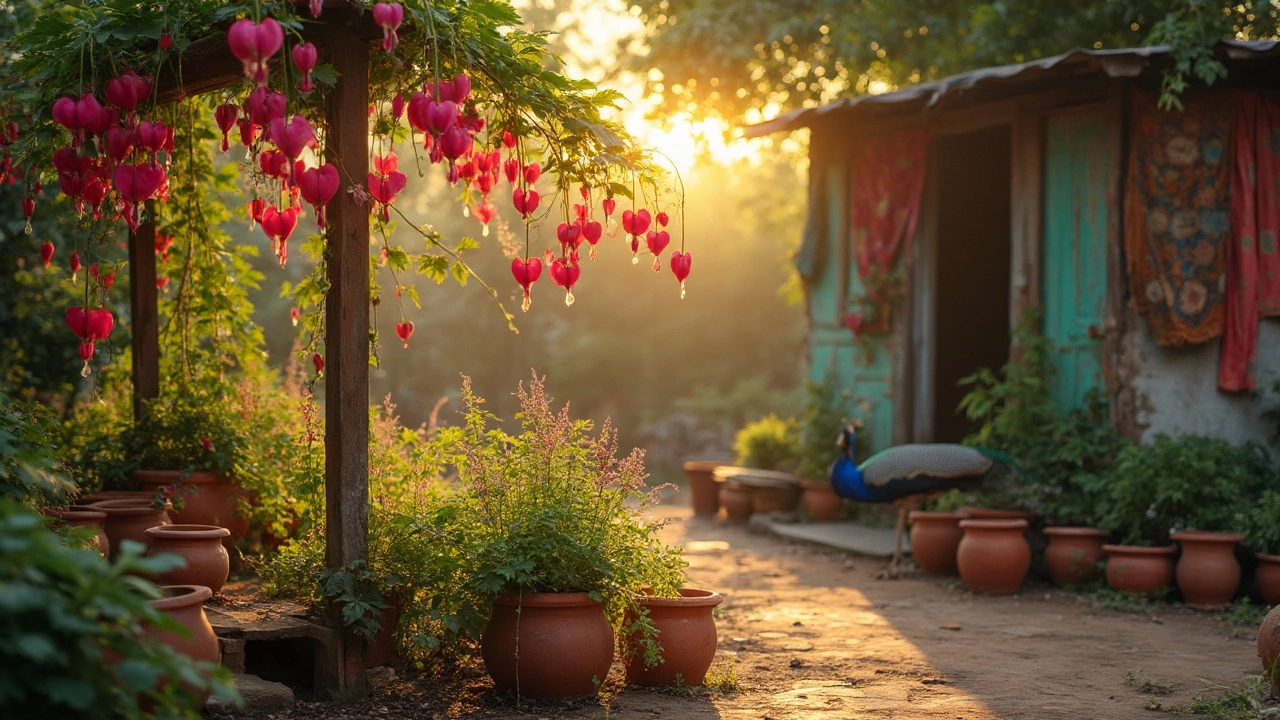Bleeding Hearts: Easy Care Guide for Shade Lovers
Bleeding hearts (Dicentra spectabilis) are those pink‑ish, heart‑shaped flowers that love the shade. If you’ve got a dim corner in your garden, this plant can turn it into a show‑stopper. Below you’ll find the basics—when to plant, what soil they like, how to water, and how to keep them blooming year after year.
Planting Basics
First, pick a spot that gets morning sun and afternoon shade. Direct afternoon heat can scorch the delicate buds. Loosen the soil to about 12 inches and mix in some compost or well‑rotted manure. Bleeding hearts like a soil pH of 6.0‑7.0, so a quick test can help you adjust with lime or sulfur if needed.
Space each plant 12‑18 inches apart. This gives the roots room to spread and improves air flow, which cuts down on fungal problems. Dig a hole twice as wide as the root ball, set the plant at the same depth it was in the pot, and backfill gently. Pat the soil down and give a slow, deep watering.
Year‑Round Care
Watering is simple: keep the soil evenly moist but not soggy. In hot, dry weeks, a couple of inches of water per week is enough. Mulch with straw or shredded bark to retain moisture and keep weeds away.
Fertilize lightly in spring with a balanced 10‑10‑10 fertilizer. Too much nitrogen can produce lots of foliage but fewer flowers, so stick to a half‑strength dose. After the first flush of blooms, deadhead spent flowers by pinching them off. This encourages the plant to put energy into new buds rather than seed formation.
When the foliage yellows in late summer, it’s time to cut it back to the ground. This helps the plant store energy in its roots for next spring. In colder regions, apply a 2‑inch layer of mulch after the ground freezes; it protects the roots from harsh freezes.
If you notice yellow leaves or stunted growth, check the soil drainage. Bleeding hearts hate waterlogged roots. Adding sand or extra compost can improve drainage. Pests are rare, but occasional aphids can be brushed off with a strong spray of water.
For container growers, choose a pot at least 12 inches wide and use a peat‑based potting mix. Water when the top inch feels dry and give a light feed every month during the growing season.With these simple steps—right spot, good soil, steady water, occasional feed, and proper clean‑up—your bleeding hearts will keep delivering those graceful, drooping blooms year after year. Enjoy the shade, watch the colors fade in and out, and let this low‑maintenance beauty do most of the work for you.

Planting Bleeding Hearts: The Ultimate Guide for Your Kitchen Garden
Thinking about adding some charm to your kitchen garden? Bleeding hearts aren't just pretty—they're easy to care for, too. This article dives into where to plant them for the best growth, key care tips, and interesting facts you might not know. Perfect for any gardener looking to mix beauty with practicality.
About
Kitchen Gardening
Latest Posts


Best Fruit and Veg to Grow on a Balcony: Easy Choices for Fresh Harvests
By Alden Thorne May 1, 2025

Rice Farming Profitability: What Really Pays Off?
By Alden Thorne May 10, 2025

Most Beautiful Flower in the World: Types, Facts, and Gardening Tips
By Alden Thorne Jul 31, 2025
